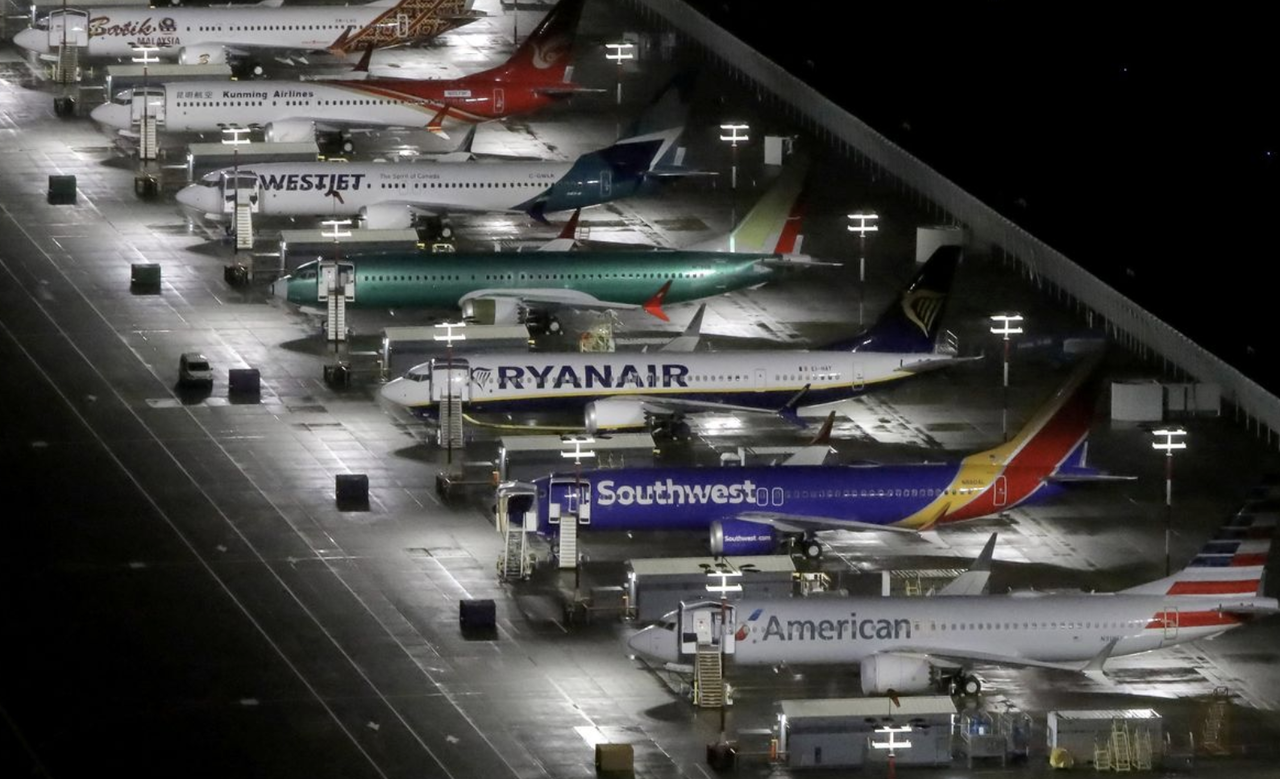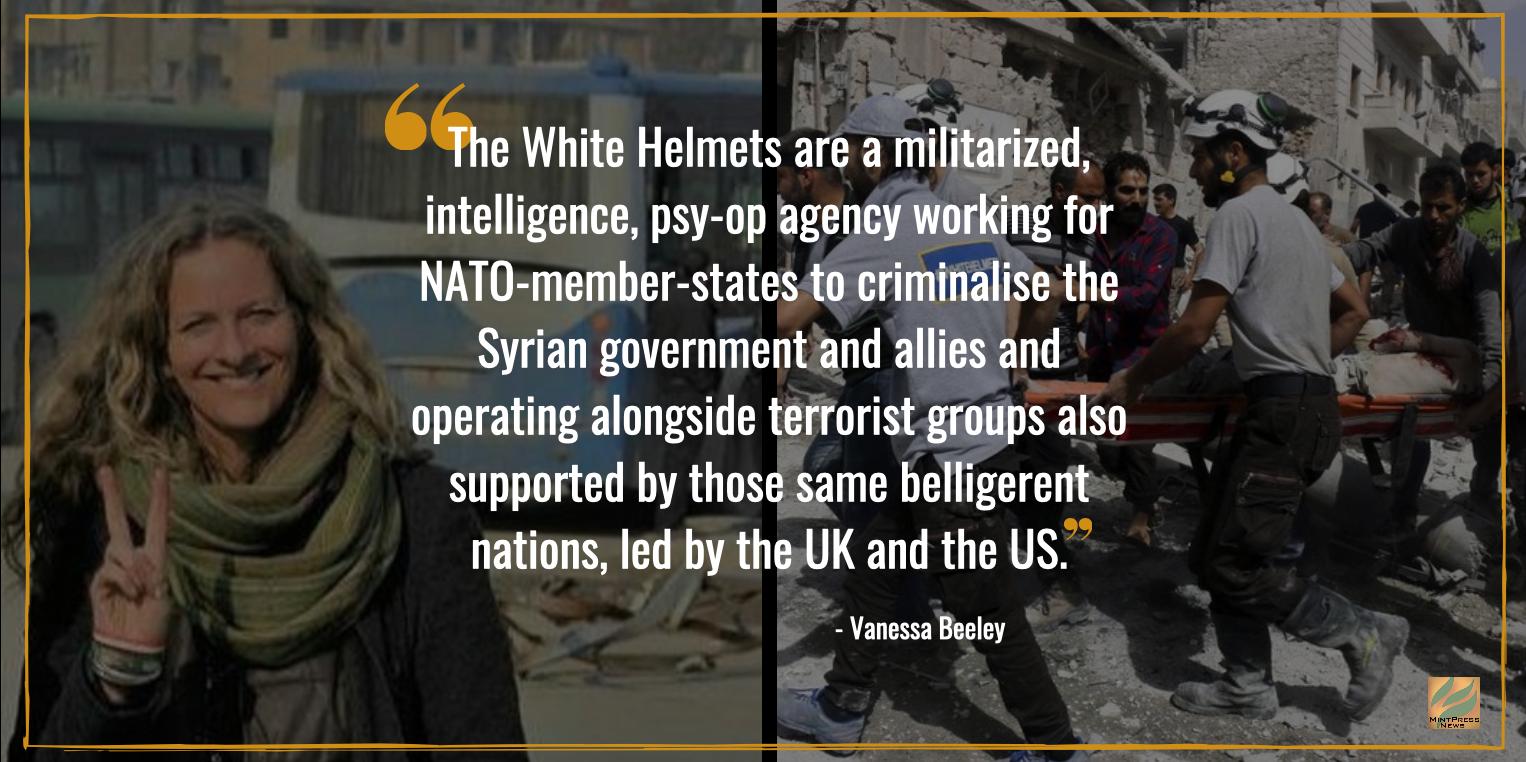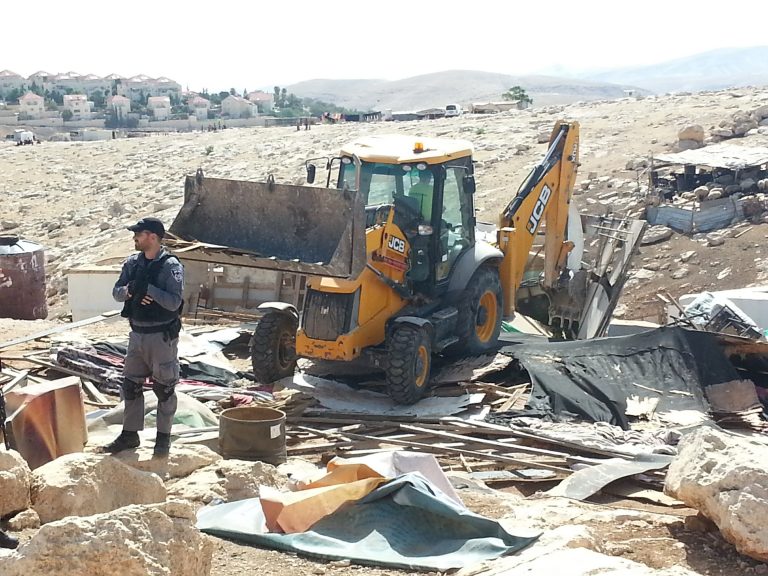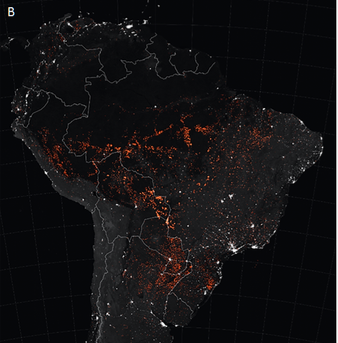“If this country ever goes under, it will be for needless, egregious hypocrisy.” — Norman Mailer, “Harlot’s Ghost”
Somewhere in Heaven, English author George Orwell is either laughing, crying, or looking on; mouth agape, speechless. The total corruption of the meaning of words in the English language, the acceptance by the general public of propaganda as news, and the surveillance of every single individual by Big Brother that he wrote about in the novel “1984” (published in 1949) have all come true.
I’m sure the explanation of “humanitarian bombing” would be of particular interest to him. The mainstream media in this country has reduced the immigration crisis to something like:
“Illegal aliens from Mexico are coming to take your jobs and live on your tax money. Good refugees from the Middle East are fleeing to Europe to escape Bashir Assad. Oh, by the way, the Muslims coming to the USA might be terrorists.”
Nowhere is the bastardization of language more apparent than in the current immigration crisis; not only in the Middle East and Europe, but in the United States of America. While the mainstream media is currently obsessed with Syrians fleeing “terrorists” attempting to get to Europe, it completely ignores the fact that the USA has it’s own refugee crisis; both with people fleeing our economic and military warfare around the world, as well as within our own borders, And just as Europe’s refugee crisis is a case of the unintended consequences of (primarily) British, French, and German colonialism coming home to roost, the immigration crisis in the United States is also of our own making.
The only people it is currently politically correct to vilify about immigration are “Mexicans” and Muslims. Nobody talks about the undocumented people here from Australia, Canada, Europe, and India; primarily because they are “model minorities” who will work cheaper than citizens of the United States. Most of them integrate seamlessly into American society, and they are usually conservative, and keep their mouths shut about immigration and foreign policy issues. And of course, they are mostly “white,” and so automatically benefit from the inherent privilege of the dominant Anglo-centric culture.
The United States of America is a nation of refugees. To be clear, a migrant is a person who voluntarily moves from from one geographical location to another for economic or personal reasons. An immigrant is someone who voluntarily decides to become the citizen of another country, and has the resources to do so. A refugee is a person who has been forced to leave their country, often in fear for their lives. Not only is the United States full of refugees from our foreign policy in Central and South America, most of the Muslims who have come here in over the past 20 years are refugees from our follies in the Middle East. (folly, noun: foolishness, foolhardiness, stupidity, idiocy, lunacy, madness, rashness, recklessness, imprudence, injudiciousness, irresponsibility, thoughtlessness, indiscretion; informal craziness. ANTONYMS wisdom).
The refugee crisis in the Americas began in 1492, and has continued unabated since Christopher Columbus landed in the “West Indies.” The indigenous people of this hemisphere have been refugees from genocide, colonization, and European diseases for over 500 years. The conquest of the Americas was the beginning of one of the longest refugee crisis in the history of the world; second only to the exclusion of Jews from Europe. Unfortunately, both the exclusion of the “darker peoples” (Moors and Jews) from European countries, and the expropriation of indigenous people’s land in the Americas (and Australia and Oceana. And Africa. And Asia.) continues to this day. Most of the people crossing the “border” into the United States are actually migrants; their ancestors bones are buried in the Americas, the land is literally in their blood. They consider the plants and animals on these continents to be their relatives. It is the Europeans and Africans who are the “illegal aliens” in these lands.
The public school narrative in our country generally goes something like this: “Christopher Columbus discovered America, and then people from England and Northern Europe founded the colonies that became the United States of America. And Canada and Australia.” Of course it is rarely mentioned that Chris was working for (and was possibly a lover of) the Queen of Spain. There may be a cursory mention of the Spanish conquests of Mexico and Central and South America, but American history is so Anglo-centric that most Americans know next to nothing about the Spanish history of the United States. The Americas are unique, because along with Australia, they are the only continents where the original inhabitants were almost entirely killed off and replaced by another ethnic group. The Inca, Mayan, Aztec, Filipino, and other lesser known civilizations were decimated by disease, firearms, and hard liquor.
In Europe, Asia, and Africa, different kingdoms took turns conquering each other; but for the most part the Nubians, Egyptians, Greeks, Romans, Huns, Mongols et.al. eventually went home. However, once they crossed the Atlantic and discovered the Pacific Ocean, the English, Germans, Spanish, and French did not. They over-stayed their welcome in the Americas, Oceana, Australia (and Africa and Asia), the legacy of which haunts Europe to this day. The Roman Empire morphed into to the Spanish, French, and British Empires. The United States of America is the final stage of this particular brand of militarized theocracy.
The average person going to “The Americas” was doing so out of duress. Like today, most people don’t have the wherewithal or the resources to just pick up and move to a foreign country. Most people never leave their ancestral homes, friends, and families unless there is some very compelling reason for them to do so. This country was not settled by bored dilettantes or timid bourgeois looking for adventure. Nobody in their right mind is going to get on a tiny, leaky, scurvy-ridden boat with a bunch of shifty-eyed strangers, cross an ocean full of sea monsters, and then have to live among people trying to hold onto their ancestral lands with arrows and spears and clubs. Not to mention the bears, wolves, cougars, wolverines, badgers, coyotes, bobcats, strange diseases, and most frightening of all: uncertainty. It wasn’t like they had round-trip tickets, like if they didn’t succeed they could always go back to…wait, that’s why they left; there was no “there” there anymore.
Most of the people who settled America were running from something; the law, a marriage, a disgruntled business partner, a jealous husband. Or perhaps they had been chased off of their ancestral lands by some duke or baron, or the King decided he wanted their 12-year old daughter for one of his serving wenches, or their village or country had been invaded, or disease and starvation had decimated their community. Sometimes they were individuals who were given a choice by the local magistrate; “Get on that boat, or get your neck stretched.” Whatever, it wasn’t people from polite society suddenly deciding on a whim to go to America for a better life. There was no “better life” until most of the people and animals on these continents and islands had been killed and/or displaced. The people who colonized the land from the Atlantic to the Pacific were not Boy Scouts. It is easy to understand America’s propensity for violence: the code of the frontier was: “Shoot first, ask questions later.”
The Refugee Crises In The United States
Those paying attention in history class in the U.S.A. may have heard of the Indian Removal Act of 1830. Probably not, though. This involved the “resettlement” of the Five Civilized Tribes, (Cherokee, Choctaw, Muskogee, Chickasaw, and Seminole), from the Deep South to the Oklahoma Territories. While Native Americans had been driven off of their land since the arrival of the Euros to these shores, this was an official expropriation by President Andrew Jackson, with the consent and approval of Congress. By 1837, at least 46,000 (undoubtedly more) indigenous people had been removed from their homelands, opening up the Southeastern United States for settlement. These refugees included Europeans and Africans who had been living among the tribes. Thousands of people died along the way; the route became known as the “Trail of Tears. This was the first refugee crisis in America created by government fiat.
By the mid-1800’s, America was sufficiently “settled” so that the European middle-class could indeed come and seek opportunity, by which I mean riches. Most people didn’t come here to work hard and save their money and blah, blah, blah. The only reason to risk life and limb and spend all of your and your families life savings to come to America was to get rich; fast, and by any means necessary. Let me put it another way; there was precious little need for social workers and designers and managers. There was much need for steely-eyed gunmen, blacksmiths, wranglers, hunters, trappers; hard men, and the women who could put up with them. Farmers? No so much; nobody ate vegetables in those days. Starting with the Gold Rush in 1849, America forever became a symbol of not just a better life, but of getting rich…quick.
However, once here, “immigrants” faced a sobering reality. Being “white” meant nothing if you were in the way off another mans wealth and power. While there were indeed massacres of settlers by pissed-off locals; there were also scores of “range wars” fought between large land owners and small ranchers and farmers. It was common practice for the afore mentioned steely-eyed gunmen to kill entire families or even whole communities; sometimes while disguised as Native Americans. People only moved West if they had too; and they usually only had too when some railroad baron or big rancher claimed, bought, or just straight out stole their land. “Go West, Young Man” was not only an entreaty of Manifest Destiny; it was often an ultimatum.
Given the current political climate in this country, it’s hard to believe that the United States actually recruited immigrants to populate the Westward expansion, as well as to provide a steady flow of cheap labor for the Eastern and Mid-Western factories (as well as cannon-fodder for future wars). Millions of people left Eastern Europe, Ireland, and Italy fleeing famine, wars, and abject poverty. In 1883, this refugee crisis prompted Emma Lazarus to write a sonnet called “The New Colossus,” which was engraved on a plaque and placed at the base of the Statue of Liberty. This was supposed to be what America was all about: liberty and justice for all. The poem ends with these immortal lines:
“Keep ancient lands, your storied pomp!” cries she
With silent lips. Give me your tired, your poor,
Your huddled masses yearning to breathe free,
The wretched refuse of your teeming shore,
Send these, the homeless, tempest-toss to me,
I lift my lamp beside the golden door!”
Unfortunately, once they got here, many Slavs, Jews, Irish, Portuguese, and Italians found themselves segregated into ghettos, and discriminated against in housing and employment. Apparently Congress did not agree with this whole “give us tired, your poor” thing, and President Chester A. Arthur’s unremarkable term in office was further tarnished when he signed the Chinese Exclusion Act in 1883. This was the first time in this country’s history that a specific ethnic group had been officially excluded from immigrating here. Although this act was initially intended to last for 10 years, it was not repealed until 1943.
I don’t know what they’re teaching kids in school these days, but I doubt many of them have to read The Grapes of Wrath by John Steinbeck anymore. Which is a crime, because in addition to being one of the best novels ever written by an American, it demonstrates that the class divide in this country is at least as strong as the racial one. The Dust Bowl migration saw approximately three and a half million people, almost all of them of European descent, move out of the Great Plains and the Southeastern United States; most of them to California. The “dust” in the Dust Bowl was topsoil that has been killed by the modern techniques of plowing and irrigation, followed by severe drought. This resulted in one of greatest ecological catastrophes in the history of the world, as the farmland of the Great Prairie simply dried up and blew away. Once again, the refugees from these disasters were not exactly welcomed (apparently nobody read Ms. Lazarus’s poem). Anti-“Okie,” “Arkie,” and “Texie” sentiment against these domestic refugees resulted in property destruction, beatings, and even murder. Some of these poor souls ended up in domestic exile in one of the most inhospitable places on Earth at the edge of the Mojave Desert; Bakersfield, California (The last I was there, it was 115•F).
The Great Migrationis the name given to the movement of approximately six million African Americans from the Dirty South to the Midwest, Northeast, and Western states in the first half of the 20th Century. Again, nobody leaves their ancestral home without a compelling reason. As in the rest of the Global South, oil, timber, and fertile farmland were bought up by “landlords” and corporations. The land of former slaves and “freedmen” was expropriated by legal and extra-judicial means. If you had a choice, it was to be either a sharecropper or tenant farmer, subject to the whims of the land owner. How many lynchings and other murders were actually about property disputes? We’ll never know. Certainly some of these people were leaving voluntarily to seek better life, but did they really have an option? African Americans (and poor whites) were refugees first, then migrants. The migration from the South to other parts of this country continues to this day; and it’s a one way trip. Nobody decides to go back to the southern states after seeing the rest of the country. The recent events in Ferguson, Missouri show that conditions in The Dirty South are still bad enough to uh, inspire people to “get the Hell out of Dodge.”
Internally Displaced Persons
The United States has approximately two million individuals incarcerated in prisons and jails. We won’t go into how many people are being held in “black” sites around the world; these numbers are just within the borders of the United States. Two million persons without a home, separated for years, or for their entire lives from their families and communities. Conditions in most jails and prisons in the United States are the very definition cruel and unusual punishment; which the Constitution and the Geneva Conventions expressly forbid. These individuals comprise the largest identifiable group of refugees in the United States today. Most of those fortunate (?) enough to be released from Gulag Americana will wander the Earth like hungry ghosts, unable to find jobs or housing, and in many cases unable to even vote in this “democracy.” This results in a constant recidivism rate of about of about 66%. The judicial/prison/industrial complex in this country feeds itself like the Ouroboros.
The official estimate for the homeless population in the United States is approximately 800,000 individuals. However, this number only includes people who are counted in a census conducted on a single night in major cities. It does not count people living in public and private campgrounds, and in sheds, garages, automobiles, and “intentional communities” outside the range of the census. Nor does it count people who have returned home and cannot afford to move out on their own, or those who are precariously housed in dilapidated buildings in the older sections of every major city in this country. And of course, it doesn’t count the aforementioned prisoners. So in fact, the number of homeless in this country is “several” million individuals; many of them families with children. The first requirement of being considered a refugee is that you have no place to live.
The latest round of domestic refugees in this country has been caused by the “tech boom,” which is actually a real-estate speculation bubble. “Tech” hasn’t done anything really impressive since the silicon chip; most “innovation” is really old wine in new bottles. I mean, even the iWatch is just a computer. A really cool, teeny, tiny computer, but…a computer. Dick Tracy’s Wrist Radio (look it up, kiddies). And can someone please tell where is the value in a Twitter? Doesn’t the fact that the company has never made any money seem to bother anyone? ”Bio-tech” has been even less impressive, spending billions to cure diseases that are mostly entirely preventable, and coming up with therapies and drugs only the wealthy can access. Nevertheless, municipalities like San Francisco have gone all-in by giving these companies tax-breaks to move into parts of cities where the property values are low, thereby “revitalizing” them. But revitalization is a code-word for gentrification. When these companies move into a neighborhood, rents go up, driving out long-time residents. When a studio apartment in a run-down neighborhood costs $2000, the people who used to live in these communities become refugees in their own city.
The “Mexicans”
“In the United States there is no history; only media.” — Carlos Fuentes
“Operation Wetback” (seriously) was an immigration law enforcement initiative implemented in 1954. This operation was a response to pressure from farmers and businesses North of the border to stop the “illegal entry of “Mexicans” to the United States. It was also supported by the Mexican government, who feared the loss of manpower for it’s agricultural and manufacturing industries. This law resulted in physical abuse, civil-rights violations, and the mass deportation of American citizens. Oh wait, those things are happening today! A compounding factor has been the growth of the private prison industry, which is now operating “detention centers.” They could also be called refugee camps…or concentration camps. These de facto prisons are full of women with young children waiting to be sent back to unbearable conditions South Of The Border.
Monterey, California was the capital of New Spain in 1776, right about the same time the British colonies decided to stop paying taxes to the King of England and essentially stole this land and called it the “United States.” Spain had been on these shores (and interior) since 1492; you do the math. And by “here,” I mean from Tierra del Fuego at the tip of South America to the Sonoma Mission in California. The Conquistadores were also in the Philippine Islands, Florida (Juan Ponce de Leon’s search for the Fountain of Youth is one of the best adventure stories of all time), and much of the Caribbean, especially Cuba. After Mexico declared independence from Spain in 1821, Spanish Territory in the much of the U.S.A. was divided into ranchos by the Mexican government. The U.S. government declared war on Mexico in 1848, and as a consequence seized all territory North of the present border, which included territories that are now the states of Texas, Colorado, Utah, Nevada, New Mexico, Arizona, and the grand prize: California.
At least half of the people most uninformed Americans and the mainstream media, call Mexicans are actually peoples from the mountains and jungles of MesoAmerica. While some of these folk are indeed Mexicans, U.S. foreign policies like the War On Drugs, The War On Terror, and the various free-trade agreements have turned much of the Global South into a free-fire zone. U.S.-trained militaries, militias, and goon squads drive indigenous people off of the land for the fruit and oil and lumber companies in Guatemala, Honduras, El Salvador, Nicaragua, Panama, Columbia, Peru, and Ecuador, as well as Mexico. Those that refuse to leave are massacred.
The existence of an imaginary line in the sand cannot keep people from migrating, even with satellites, airplanes, helicopters, drones, walls, fences, tanks, domestic para-military militias, and ridiculous laws. Indigenous peoples have been moving from North to South, and South to North for millennia. The racist joke: “If you have two Mexicans in the room, you have at least one Indian” is basically true. Despite what you see on Telemundo and Univision, most of the people who live in Mexico, Central, and South America are mestizo; European and indigenous blood. Also, unlike the people on Latin American television, most people do not live in modern housing, or drive automobiles. In fact, most people in those countries don’t have enough to eat, clean water, electricity, roads, schools, or access to conveniences like refrigeration, modern medicine, and education.
Most of this migration is due to covert and overt subversion of these countries by foreign intelligence operatives (guess who?), drug cartels, and of course international capital. Consequently, some people are forced to leave their ancestral homes, families, and friends, and to borrow impossible sums of money to make an impossible trip; from literally the middle of nowhere to the biggest security state on Earth. People are driven from the countryside, usually into over-crowded cities with no prospects of gainful employment. Indeed, the only jobs for poor people in most Latin American countries is to work for the drug cartels in some capacity or other. So when faced with the choice of starving to death or being assassinated in the mountains or jungle, or facing long prison terms in the worst conditions imaginable, or certain death in the drug game, many people try to make it to the United States. Not because most of them want to “find a better life,” or to live like the people in the tele-novellas. No, most people just want to live.
If all the people that the “conservatives” call Mexicans were to leave tomorrow, their over-privileged lifestyles would disappear the first time they ordered a margarita. I mean, do they even know where Tequila is? Or what it is? (No, it’s not “cactus juice”). For starters, there would be nothing to eat at their fast-food joints or chain restaurants, and no one to prepare it if there were. Who is going to make those burritos and tacos Americans scarf up by the ton? And who do you think is really doing the cooking in those chic-chic restaurants (not the celebrity chef, that’s for sure)? There would be nobody to wash the cocaine out of the sheets at the fancy resorts and hotels, nobody to cut the grass and unload the trucks and watch the kids while you go to the mall or wherever. Nobody to do all the ridiculously dangerous and tedious work that is done by “illegal aliens.” Billions dollars would drop out of the U.S. economy overnight. And there would be nobody to scapegoat for the numerous problems the United States of America is causing around the world; or for our own self-inflicted wounds.
San Francisco: A Sanctuary City
Speaking of international war crimes, I met “Bashir” in Belize in 2009, and I asked him to be careful of U.S. meddling in his homeland. Haven’t heard from him in a while. Hope he wasn’t at a wedding party….. San Francisco has been home to refugees from Latin America every since this was Nueva España. The Chinese have come and gone from the Golden Mountain for centuries. The “Chinatowns” in San Francisco, New York, and Los Angeles are among the oldest ghettos in this country. Displaced Filipinos have been making their way to Cali since the Spanish American War in 1898. After WWII, many Russian and Japanese refugees moved to the West, mostly to San Francisco and Los Angeles. “Little Saigon” in the Tenderloin District of San Francisco has become home to people from Vietnam, Cambodia, Laos, Thailand, and Myanmar; most as a direct result of consequences from the Vietnam war. Recently, the City has had an influx of people from Syria, Yemen, Libya, Palestine, Iraq, Iran, Afghanistan, Somalia, and Eritrea/Ethiopia. None of them seem particularly thrilled to be here, which indicates they are refugees, not immigrants.
San Francisco is an official “sanctuary city,” which means City officials are not in the business of checking peoples papers. There are asylum seekers here from all over the world. All those great international restaurants that San Francisco is so well known for? Thai, Burmese, Vietnamese, Afghani, Indian, “Middle Eastern,” Persian, Greek, Russian, Brazilian, Columbian, Cuban, Korean, Japanese, Salvadoran, Guatemalan, Nicaraguan, Moroccan, Ethiopian, Senegalese, and of course the many flavors of the many regions of Mexico and China. Most of them have some connections to refugees. If they are not owned by asylum seekers, the people working in the kitchen and dining room are almost certainly working “off the books.”
There used to be a gift shop on Market Street near the Cable Car turntable called Afghan Treasures. They sold really nice handcrafted items from Afghanistan, Pakistan, India, Tibet and Nepal. This family was one of the first to flee the American invasion in 2001. I was a regular customer, and I was always afraid to ask how their family was doing back home; but I did anyway. They always said everything was fine, but how could it have been? Although the San Francisco Bay Area is the most liberal place in the United States, rising Islamophobia forced them to change the stores name to…Hidden Treasures. And I’m sure they weren’t trying to be ironic. This was some years ago; they have been subsequently gentrified out of the City (Twitter moved into the neighborhood). But Afghan refugees continue to come to the USA; the closest smoke shop to me is owned by Afghanis, and they sell a brand of cigarette paper papers called “Afghan Hemp” that are the best papers I’ve ever used; (and I’ve used them all).
Today’s immigration crisis in the United States is only framed in the most simplistic sound-bites. In fact, it’s an enormously complex issue involving people from the four corners of the Earth. The bottom line is that most refugees, both domestic and foreign, are here as a direct result of the greed, ignorance, and hubris of our leaders. It’s long past time we stop calling the people entering, or attempting to enter the United States “illegal aliens,” especially those that are here as a result of our actions in their countries. All borders are imaginary, and all borders change over time. Many of the people Coming To America are victims of American Exceptionalism; hubris, ignorance, coup d’état, vulture capitalism, and benign neglect. The “War on Drugs” and the “War on Terror,” neither of which “we” are winning, produce thousands of refugees each day. Also hundreds of corpses.
A nation of refugees cannot possibly discriminate against refugees that result from the actions of it’s own foreign policy. But we do; we have gone so far off-track in this country that our moral compass is pointing to “H”…..Hell. We have homeless children starving to death on our own city streets, and yet have the temerity to dictate to people in a foreign country how to live; and we bomb them if they don’t agree. The alleged “Christians” who run this country need to read their Bibles, and to remove the tree from their own eye before worrying about the splinter in the eye of their neighbors.
*
Note to readers: please click the share buttons above or below. Forward this article to your email lists. Crosspost on your blog site, internet forums. etc.
This article was originally published on Scoop.it.
Joseph Thomas is a San Francisco writer and digital media producer. [email protected]

























































